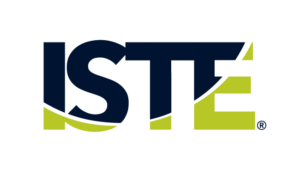In the past decade, state policymakers have invested heavily in devices and infrastructure to narrow the digital divide in schools. Many are now recognizing that, to ensure these investments are achieving their intended impact, the human aspect of the equation must be addressed — states must help educators use the digital tools for effective classroom instruction. For example, Nevada’s leaders recently convened diverse stakeholders to establish a shared vision around effective ed tech use and put into motion strategic educator supports necessary to reach such a vision. I asked Jhone Ebert, Nevada’s state superintendent of public instruction, to share her state’s story and advice for other state leaders looking to engage in this work. Her responses are below.
 How did Nevada recognize the need to establish a shared vision around effective ed tech use?
How did Nevada recognize the need to establish a shared vision around effective ed tech use?
Nevada has long recognized the critical role that technology plays in schools. In 1997, Gov. Bob Miller and the state Legislature established the state ed tech commission, responsible for developing the statewide ed tech plan and distributing funds necessary for its implementation. The commission’s actions have successfully led to significant improvements in connectivity and ed tech access.
However, we recognized that in order for schools to truly develop students into innovators and creators, the issue of educator capacity cannot be overlooked. Many educators have not been adequately trained by their preparation programs to leverage ed tech to promote active use. Therefore, the burden of getting educators up to speed often falls on to districts. To address this gap, we first needed to know where we wanted to go. We needed a vision, shared among all key stakeholders, for what we mean when we say “effective ed tech use.”
Which steps did Nevada take to create this shared vision?
ISTE’s 2016 student standards update prompted state leaders to seriously consider how our own ed tech standards could be revised to reflect the types of competencies that Nevada students should achieve.
In the following year, our Legislature officially called for an update through S.B. 200. We built on this charge by convening students, teachers, librarians, coaches and administrators, as well as higher education and business sector leaders. These stakeholders agreed that the ISTE standards provided a well-crafted framework for what effective digital teaching and learning should look like. We worked to incorporate the ISTE standards into our state’s own integrated technology standards. We also offered all districts an opportunity to give input through public comments. In August 2019, the state board adopted the final standards.
But we knew we weren’t finished. Adopting new standards meant that educators need to be trained on how to support students in meeting specific competencies.
How are you ensuring that this shared vision is implemented effectively in classrooms?
We brought onboard Cindi Chang as our state programs professional to lead standards implementation efforts. Cindi collaborates with Nevada’s regional agencies to coordinate training opportunities, where educators can unpack the ISTE standards and identify standards-aligned resources. We also look forward to equipping educators with a support guide, which will feature multimedia resources on how to apply key concepts identified in the standards to classroom practice.
What advice do you have for other states looking to engage in this work?
Collaboration is key. Reach out to stakeholder groups and bring them together to achieve consensus. Each group has something special to offer. In Nevada, the business sector provided a means to improve ed tech access, students provided valuable input on how they would like to use technology to demonstrate learning, and state leaders provided the prioritization necessary to develop and implement the new standards. This work is just too important to be done in siloes.









